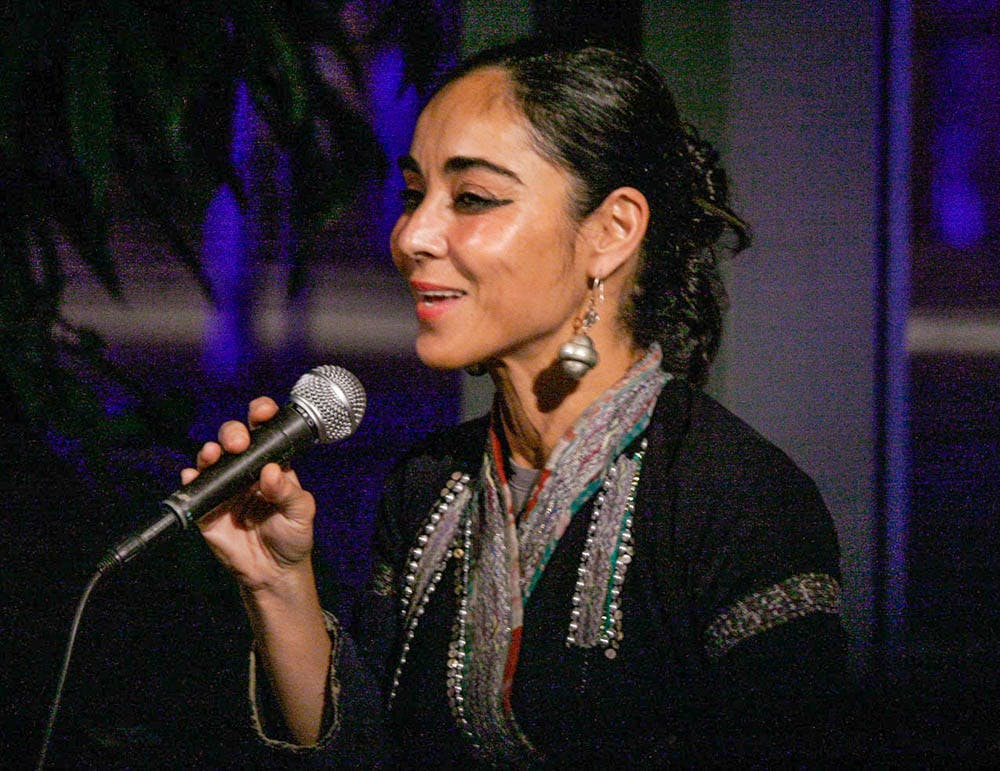Last Wednesday, Shirin Neshat spoke to a full Martinos Auditorium in the Granoff Center for the Creative Arts for the second of Brown Arts Initiative’s Warren and Allison Kanders Lecture Series. Iranian-born artist Neshat works with several forms of media, including film, photography and even music to discuss topics including gender, religion and violence.
Neshat never studied art. She has what she described as a “nomadic” career which began in photography and has led her to collaborate with different artists in projects that span the globe. She began working with art to express her experience with exile and alienation. She talked about the juxtapositions — including nature versus culture, sexuality versus violence and men versus women — that interest her and play a formative role in her art.
Neshat began her lecture by talking about her work in photography. “I don’t even own a camera,” she said. Instead of taking photos, she organizes scenes and sometimes poses for them. She made her first major body of work, entitled “Women of Allah” after her first trip back to Iran. The photographs, which offered various images centered around poetry, guns and veiled women, proved controversial. Another major body of Neshat’s photography work, “The Book of Kings,” showed stark images of young activists, many of whom sacrificed their lives for their patriotic beliefs. “Photography is about human portraits,” she said.
“The Home of My Eyes,” a photographic series, took inspiration from the exaggerated hand positions of earlier Christian paintings. This series offered similar intense black and white portraiture, this time focused on diversity and the concept of the home. When these photos went on display at the Venice Biennale, the Christian references were paired with a permanent installation of the Madonna. Neshat did not plan for this but liked the juxtaposition of the older sacred imagery and her new take on religious themes.
As time went on, she began to move into film. The works she directed, primarily in black and white, mimicked the starkness and clarity of her earlier photographs. The first full-length movie she made, “Women Without Men,” was based on a book that the Iranian government banned. The story follows five women navigating modern Iran and the possibility of living in a society without men. The author of the original novel, Shahrnush Parsipur, received an honorary doctorate from Brown in 2010. The film took six years to produce and served as “a way to pay tribute to this monumental woman,” Neshat said. Though much of Neshat’s earlier work had not been accessible to people in Iran, many could find her film illegally, bringing her work into homes across her native country, she said.
Her more recent film, “Looking for Oum Kulthum,” was released in September. The film follows a female Iranian director trying to capture the story of the famous Egyptian singer Oum Kulthum. The filmmaker’s story — and the film she struggles to create — tell the tale of women faced with the constraints of a conservative, male-dominated society.
This past summer, Neshat, who had never worked with music, was asked to direct the opera “Aida,” which has been criticized for its portrayal of Egyptian culture from an Italian perspective. Neshat’s take did away with many of the opera’s conservative and ornate traditions. She used a simple and elegant box structure as the setting for the work. Her commanding use of stark, powerful imagery, was paired with the confines of the Italian opera to form a dynamic juxtaposition, she said. Her production of “Aida” received harsh criticism from some followers of opera and, at the same time, immense praise from others, she added.
At the end of her talk, Neshat asked the audience how we deal with the past. For Neshat, that answer is clear: She channels her story into art.





